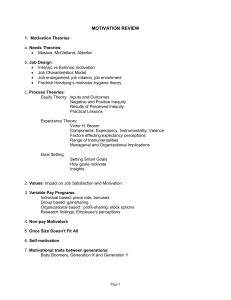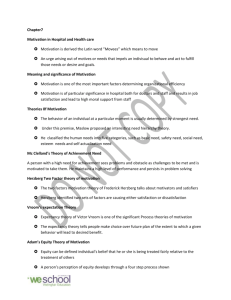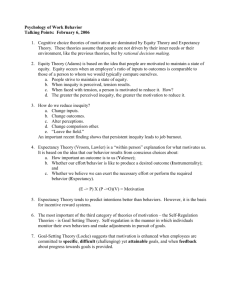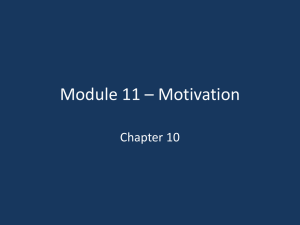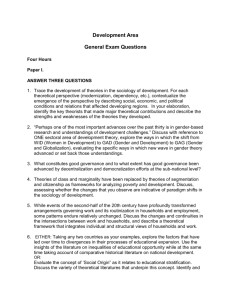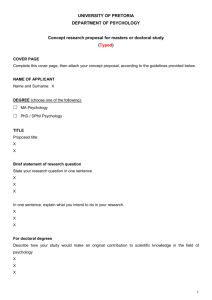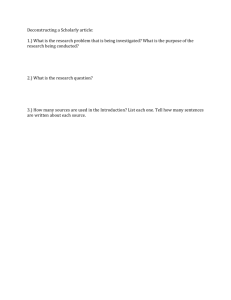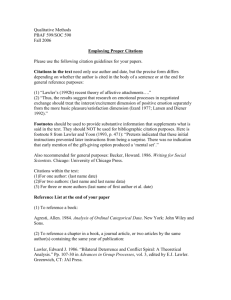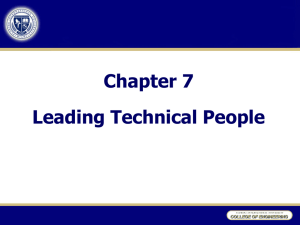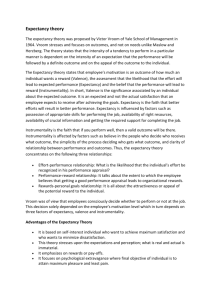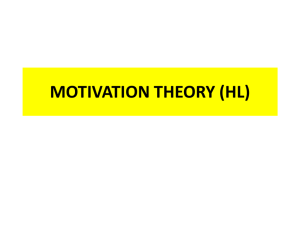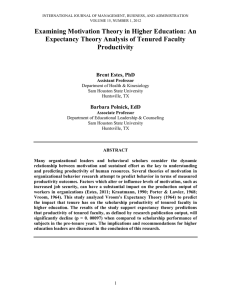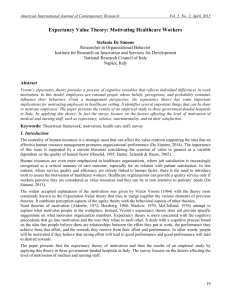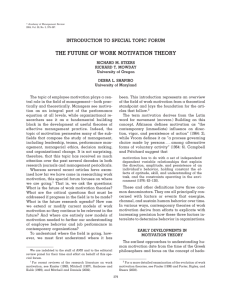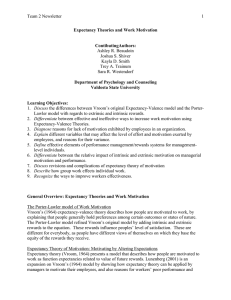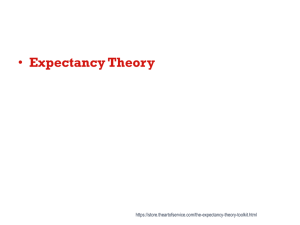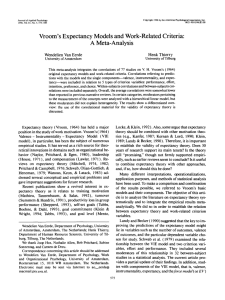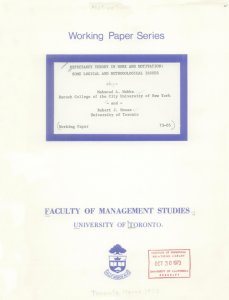Vroom V H. Work and motivation. New York: Wiley, 1964. 331 p.
advertisement
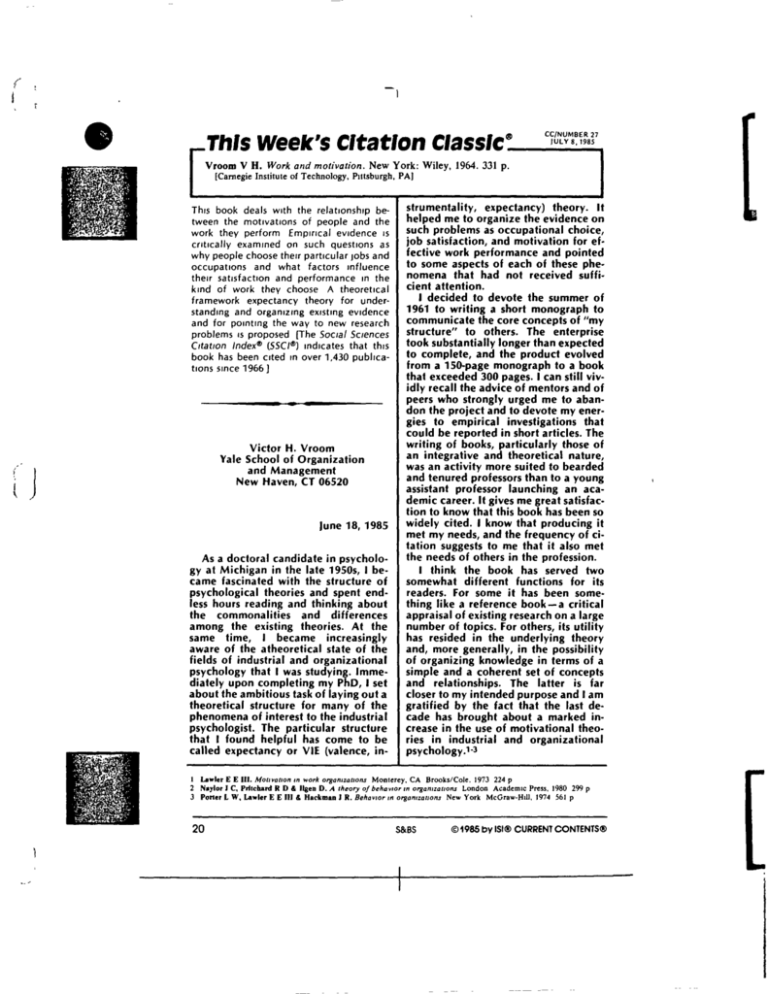
. 1 This Week’s Citation Classic®________ [ Vroom V H. Work and motivation. New York: Wiley, 1964. 331 p. [Carnegie Institute of Technology, Pittsburgh. PAJ This book deals with the relationship between the motivations of people and the work they perform Empirical evidence is critically examined on such questions as why people choose their particular jobs and occupations and what factors influence their satisfaction and performance in the kind of work they choose ,‘i theoretical framework expectancy theory for understanding and organizing existing evidence and for pointing the way to new research problems is proposed [The Social Sciences Citation index® (SSCI®) indicates that this book has been cited in over 1430 publications since 1966] Victor H. Vroom Yale School of Organization and Management New Haven, CT 06520 June 18, 1985 As a doctoral candidate in psychology at Michigan in the late 1950s, I became fascinated with the structure of psychological theories and spent endless hours reading and thinking about the commonalities and differences among the existing theories. At the same time, I became increasingly aware of the atheoretical state of the fields of industrial and organizational psychology that I was studying. Immediately upon completing my PhD, I set about the ambitious task of laying out a theoretical structure for many of the phenomena of interest to the industrial psychologist. The particular structure that I found helpful has come to be called expectancy or VIE (valence, in- strumentality, expectancy) theory. It helped me to organize the evidence on such problems as occupational choice, job satisfaction, and motivation for effective work performance and pointed to some aspects of each of these phenomena that had not received sufficient attention. I decided to devote the summer of 1961 to writing a short monograph to communicate the core concepts of “my structure” to others. The enterprise took substantially longer than expected to complete, and the product evolved from a 150-page monograph to a book that exceeded 300 pages. I can still vividly recall the advice of mentors and of peers who strongly urged me to abandon the project and to devote my energies to empirical investigations that could be reported in short articles. The writing of books, particularly those of an integrative and theoretical nature, was an activity more suited to bearded and tenured professors than to a young assistant professor launching an academic career. It gives me great satisfaction to know that this book has been so widely cited. I know that producing it met my needs, and the frequency of citation suggests to me that it also met the needs of others in the profession. I think the book has served two somewhat different functions for its readers. For some it has been something like a reference book—a critical appraisal of existing research on a large number of topics. For others, its utility has resided in the underlying theory and, more generally, in the possibility of organizing knowledge in terms of a simple and a coherent set of concepts and relationships. The latter is far closer to my intended purpose and I am gratified by the fact that the last decade has brought about a marked increase in the use of motivational theories in industrial and organizational 1 psychology. -3 I Lawler C C III. Molt vailon in work organizations Monterey, CA Brooks/Cole. 1973 224 p 2 Neylorj C. Pritchard R D & ilgen D. .4 theory of behavior in organizations London Academic Press, 1980 299 p 3 Porter L W, Lawler E E III & Hackman I R. Behavior in organizations New York McGraw-Hall, 1974 561 p 20 S&BS ~1 ©1985 by ISI® CURRENT CONTENTS® ___________________
